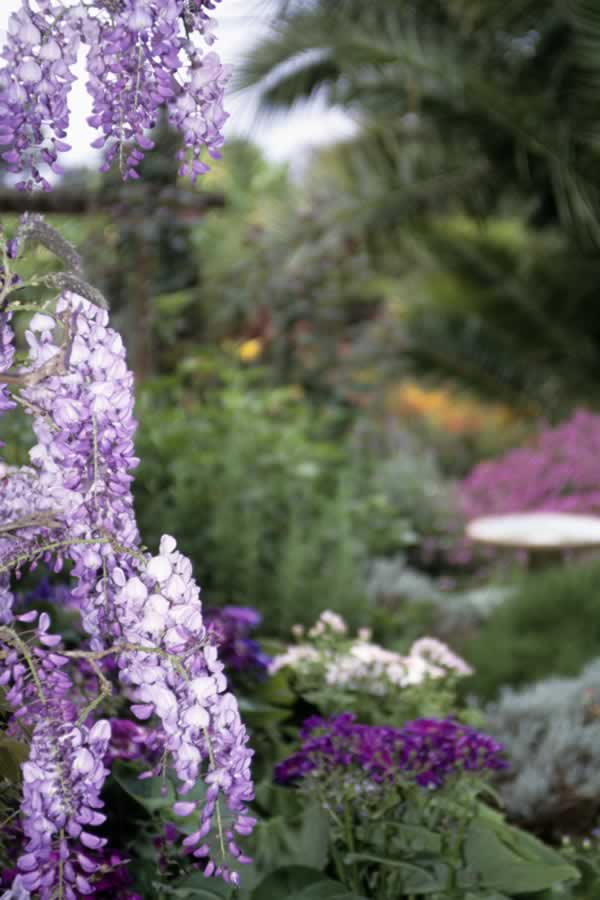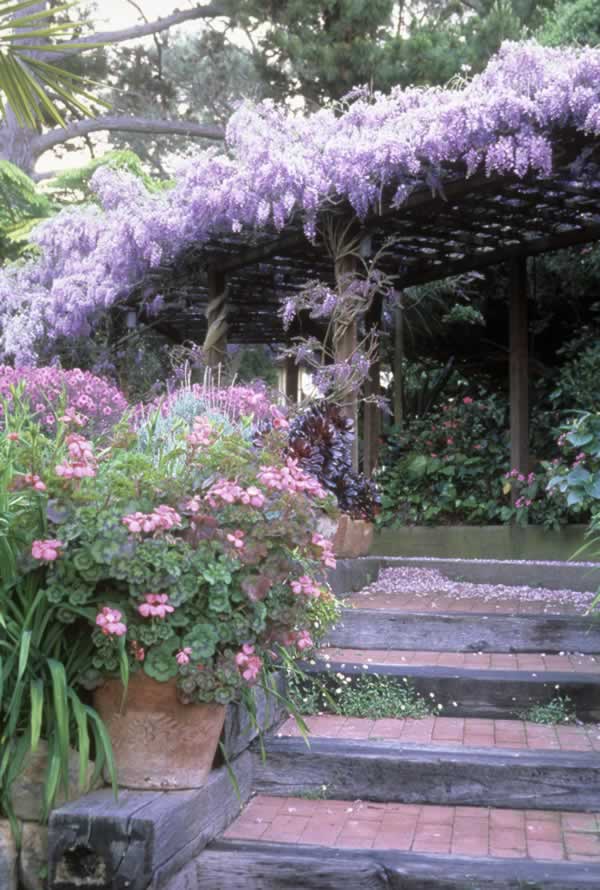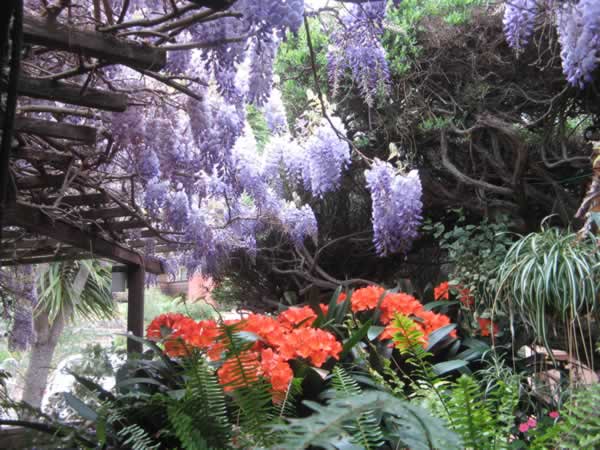Blue Chinese Wisteria Tree

Gardening Question from Linda:
I love your website. I would like to purchase a Blue Chinese Wisteria Tree, I have a Bottle Brush Tree that has been planted by the city on the green belt in front of my house. I HATE this tree as it always gets in the plumbing. I wanted to replace it with a Blue Chinese Wisteria Tree, but I need to know if this tree’s roots would also get in my plumbing, as I have had to have plumbers go into the main and cut the roots, and I don’t want to go through that again. I know I have to get permission from the City first, but wanted to get all the facts first before presenting my case.
Also I live in Southern California about 4.7 miles from the beach, (Huntington Beach, CA) Do I live in a good zone location to grow this tree? Since we have mild winters here I wondered if it would be too warm a climate or does this tree do better on the East Coast?

Chinese wisteria ‘Cooke’s Special. Note how branches were trained in correct direction up posts. On the left they have grafted together into a trunk. Flowers bloom on spur wood, seen sprouting from the twiners trained up the post on the right.
Answer From Pat:
Personally I love bottlebrush. Weeping bottlebrush brings birds, including the beloved mockingbird. Why not have your pipes lined to the street. It’s expensive but worth it. I did it at my house and urge you to do this if you can afford it. I once had a huge plumbing bill for my old house and this was just one small part of it. I borrowed the money and am paying it off on time at a very low rate. No regrets! I did the right thing. No more worries and actually a big financial saving.

Clivia miniata blooming in the shade of Chinese wisteria in Pat’s garden. Both plants are drought resistant and bloom at the same time.
Wisteria grows marvelously well in Southern California but requires correct training and pruning, few people do it the right way and when pruning incorrectly they cut off the following year’s flowers. I continually try to teach the right way to prune it which makes for more flowers than ever, my organic book covers this subject in detail.
Wisteria is a vine and when trained as a tree it is never large, it is very small in fact. And yes, if it grows big enough, it might also invade pipes.
Thanks for loving my website.
Pat
Photo by kkimpel 


I have some cuttings that I am rooting. My question is when should I plant it outside? I started rooting at the beginning of April. should I leave it in the pot until it gets bigger of should I plant it outside middle to end of May?
You can plant your cutting outside as soon as the roots fill the pot, or if you prefer, you can transfer the plant into a larger container and when the roots fill that pot then plant outside. Be sure to provide good drainage and water regularly. Water and fertilize for the first 3 years. After that wisteria usually grows well without the need for fertilizer and due to aggressive roots can often survive without any special irrigation beyond that which is normal in a drought-resistant garden.
I have never before had anyone tell me they successfully rooted a wisteria. Growers do not root wisteria. They graft good named varieties of either Japanese or Chinese wisterias onto the rootstock of a seed-grown Japanese variety. Seeds of wisteria will always be Japanese never Chinese. All seeds of wisteria if planted or allowed to grow when they plant themselves will result in strong-growing but inferior plants that do not have a good color and usually take 10 or 12 years to flower after planting.
This is why I have often said “always begin by planting and growing a good named variety, never a seed-grown plant.” Many named, grafted varieties are spectacular and there are many to choose from, especially Japanese varieties with flowers that are super long and or have lovely colors. The flowers of Chinese varieties bloom on bare wood and the leaves come out later. Japanese varieties, naturally twine clockwise unless the owner does not train them this way in which case some of the new branches, or twiners, will get going in the wrong way and the whole thing will become a rats nest of growth. The leaves of Japanese varieties emerge at the same time as the flowers.
Usually the bloom season of Chinese varieties does not last as long as with Japanese varieties. However the flowering season is very spectacular. Chinese varieties naturally twine counter-clockwise and the same is true as with Japanese varieties: the best practice is to twine them in the right direction, then the twiners will make natural grafts and you will eventually get thick trunks climbing up the post of your pergola or arbor.
Growers plant seeds of Japanese wisteria in pots and after the seed sprouts and grows a sufficiently thick stem they cut it off and graft on a cutting of a good named variety. Then when the plant grows tall enough and flowers, which happens the first spring, they will sell it. This is much easier to do than trying to grow roots on a cutting of a good variety. Good varieties do not usually grow good strong roots. Also cuttings are notoriously difficult to sprout. If you have managed to do this, it is remarkable. Unfortunately if you grew a cutting of a named variety it will most likely have very weak roots. All named varieties grown commercially and sold at nurseries are grafted onto Japanese rootstocks.